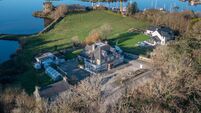The colourful and corrupt world of Mr Big
Emotions evoked by Liam Lawlor will remain mixed after his colourful world came to an abrupt end on a dark street in Moscow on Saturday morning.
The story also managed to push the Fianna Fáil Árd Fheis off the front pages of most weekend newspapers in an irony which Lawlor himself would have appreciated more than most.
Since he first emerged as a public figure when elected for the party as TD for Dublin West in 1977, he sported an air more associated with high-flying businessmen than parish plump politicians.
With secret bank accounts held in exotic settings stretching from the Bahamas to Gibraltar and a regular visitor to locations from Baghdad to Prague, Lawlor was indeed Ireland’s very own “International Man of Mystery”.
And it was the love of money by the man dubbed “Mr Big” by political lobbyist Frank Dunlop which proved Lawlor’s downfall as he saw public office as a device for personal and financial advancement.
Evidence uncovered by the Planning Tribunal documented several incidents where he muscled in on business deals demanding a slice of the action, often using his cachet as a TD.
Despite his many qualities including a sharp intellect, affability and business acumen, the former inter- county hurler for Dublin was also an unabashed bully and liar. Achieving more fame than other members of Dáil Éireann who never attained high office, the supreme tragedy of his controversial life is that his was a wasted talent. Sadly, Lawlor became the political manifestation of Celtic Tiger greed by becoming a central figure in one of the country’s most shameful scandals.
Despite his protests of innocence, he was a pioneer in the move by unscrupulous property developers in collusion with solicitors, accountants and public servants to exploit Dublin’s housing shortage of the 1990s by engaging in dodgy deals to massively inflate the price of scarce land for their own benefit.
Over a decade later, following his retirement from politics, as he faced the threat of having to sell his multi-million euro mansion in Lucan to pay legal bills imposed by the Planning Tribunal, he turned to Eastern Europe and the opening economies of former Iron Curtain states to seek out more property ventures.
Lawlor rarely shied away from protesting his innocence to journalists, and he increasingly in recent years referred to himself in the third person.
“Liam Lawlor has always co-operated with the Tribunal,” became his consistent, if laughable, mantra.
Analysis of his less than ordinary life and death will undoubtedly prove harsh for Lawlor’s wife, Hazel, and their four children who certainly will have known a different Liam to the one portrayed and derided in the media.
But for all his negative attributes, Lawlor will ultimately warrant little more than a footnote in Irish political history. However, there is unlikely to ever be a more colourful one.














